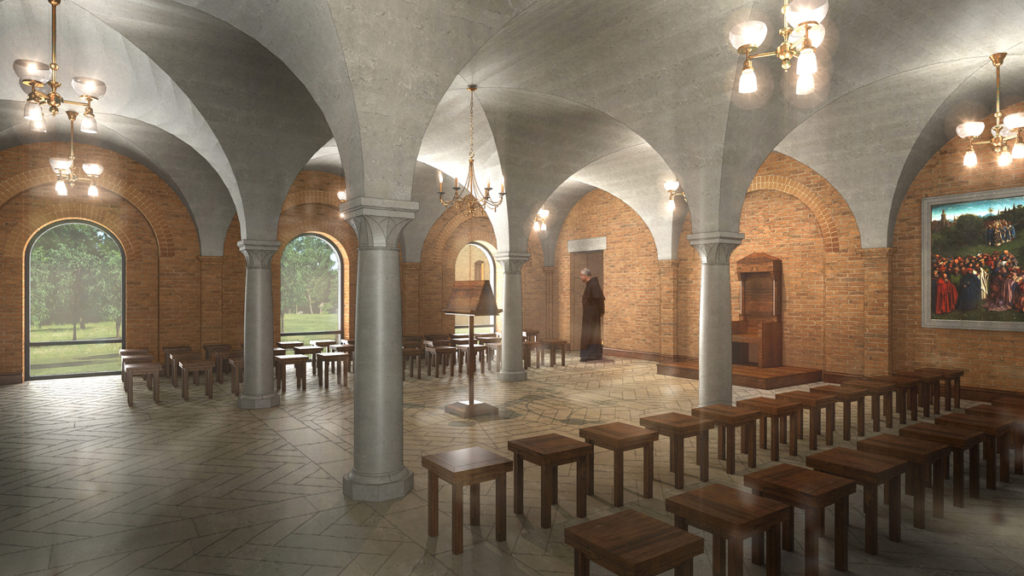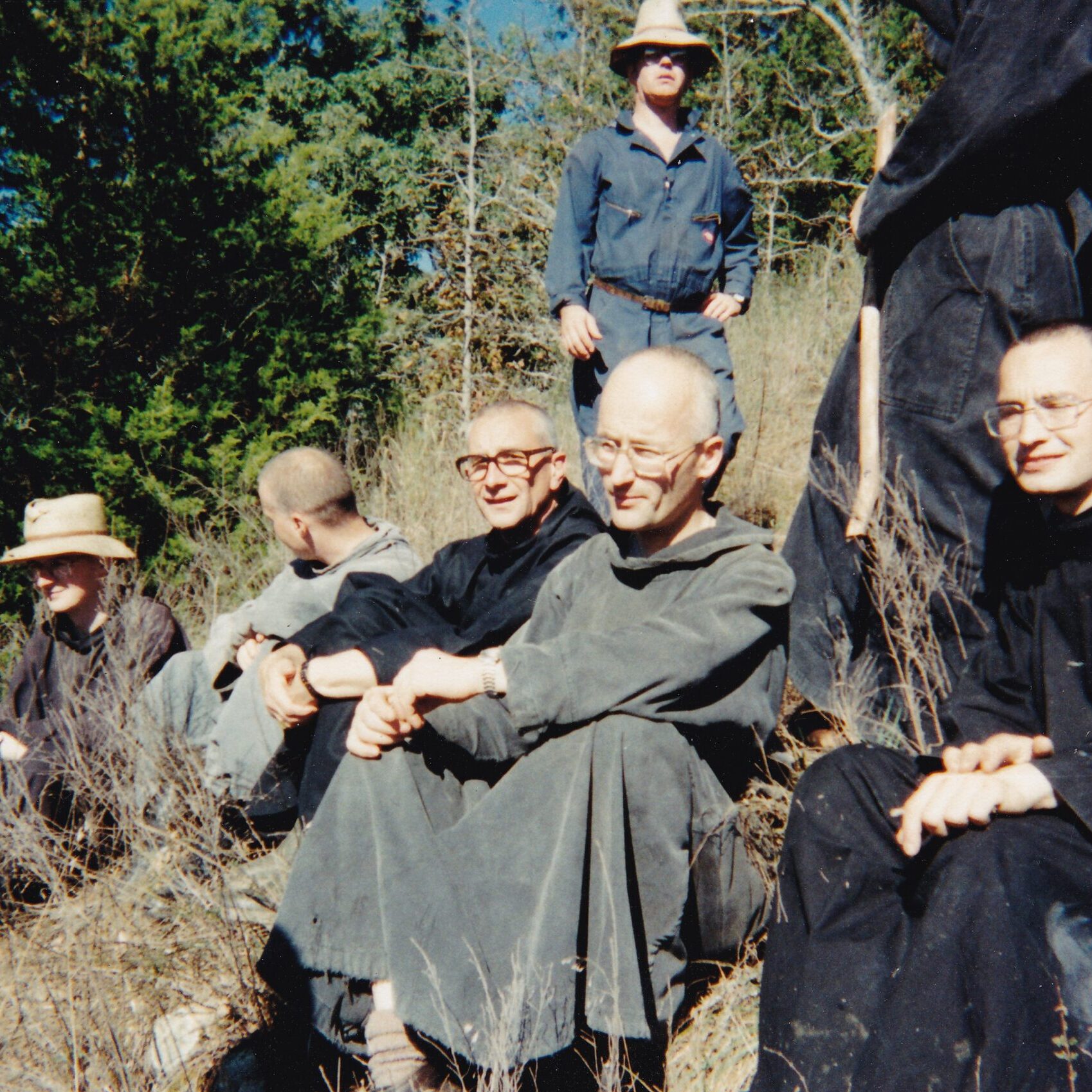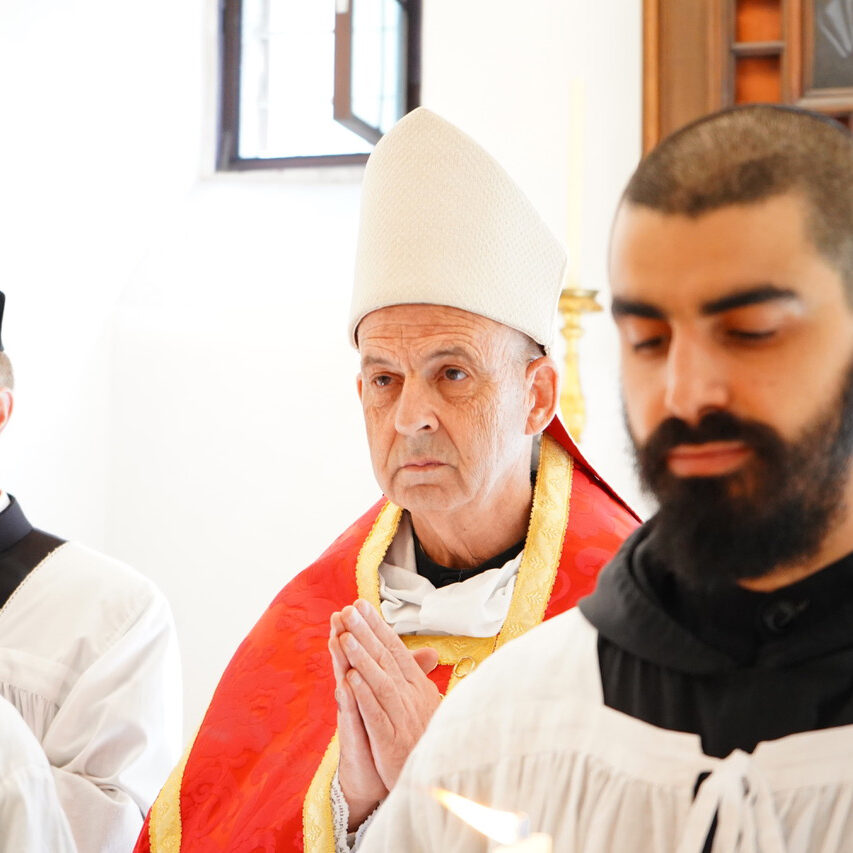Dear Friend of Clear Creek Abbey,
As with most houses, the monastic house has its common areas and its special places. There are rooms where a spider’s web will hardly last a day before being unceremoniously swept into oblivion; there are others where, well, the standard of cleanliness is somewhat lacking at times (from which the spider knows how to benefit). The most important places in a monastery are called “regular places”, loci regulares in Latin. In these places there must be a more profound silence and greater respect all round. The church is, of course, the first of these regular places, but there is another which the monks frequent assiduously, which is to say the Chapter Room, or Chapter House. All the great cathedrals and monasteries of Europe had their Chapter House. 
No doubt the principal reason for the name “Chapter House” is the fact that the governing body of the abbey, the chapter, meets in this special place. The chapter decides if a monk will be allowed to make his profession of vows; the chapter elects the abbot; the chapter is consulted and, under the guidance of the abbot, decides upon the most important questions that can come up, such as the decision to make a new foundation. It is in the chapter room that a monk receives the monastic habit and later undergoes the Mandatum ceremony, marking his entry into the canonical novitiate year leading up to profession. Here it is that the monks meet twice a day to pray for the dead and listen to the reading of the Roman Martyrology or to a spiritual book. It is here that each day a chapter or part of a chapter of the Holy Rule is read. It is in the Chapter Room that is conducted the chapter of culpa, where the monks ask pardon for faults (not sins) committed during the week. Chant classes are often conducted there as well.
Indeed, the Chapter Room witnesses the unfolding of much of the life of a monastery. It holds its secrets—sometimes for centuries—secrets concerning the government of the abbey and certain secrets of the soul. But there are holy secrets and unholy ones. The business of a monastery must always be accomplished in the light, and nothing must be hidden for purposes of selfish interest. On the contrary, much of what happens in this regular place, this holy room, is about assuring that the law of the Church is respected and that souls are helped in their progress toward the light of God. As with the abbatial church, it is from this room that we hope to move someday to the Heavenly Jerusalem, the place of the “vision of peace.”
The Chapter Room of Our Lady of Clear Creek Abbey is at the center of the building currently under construction. Please view the artwork below (generated by the office of our architect, William Heyer), which is a rather realistic representation of the Chapter Room we hope to have completed in a little over a year, God willing. Your spiritual and material help in turning this sacred purpose into a reality is deeply appreciated. Without your help it would simply not be possible.
br. Philip Anderson, abbot







